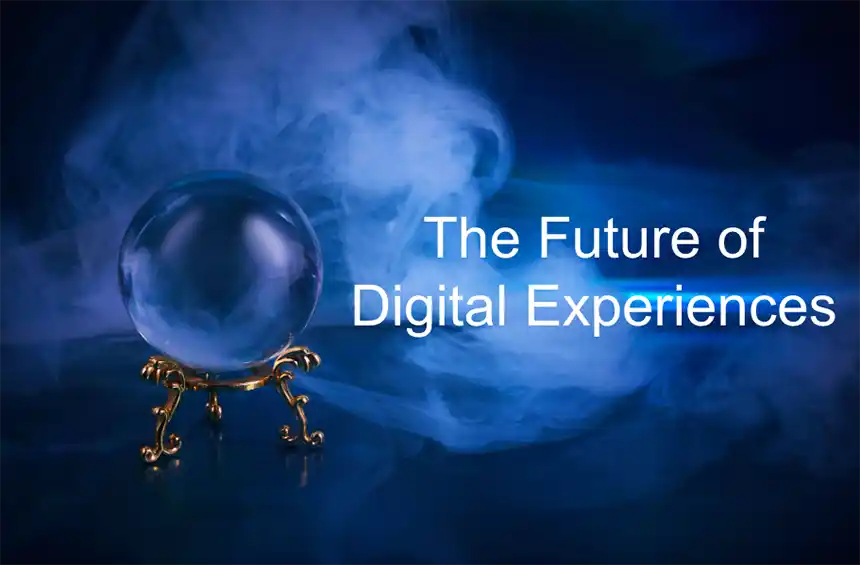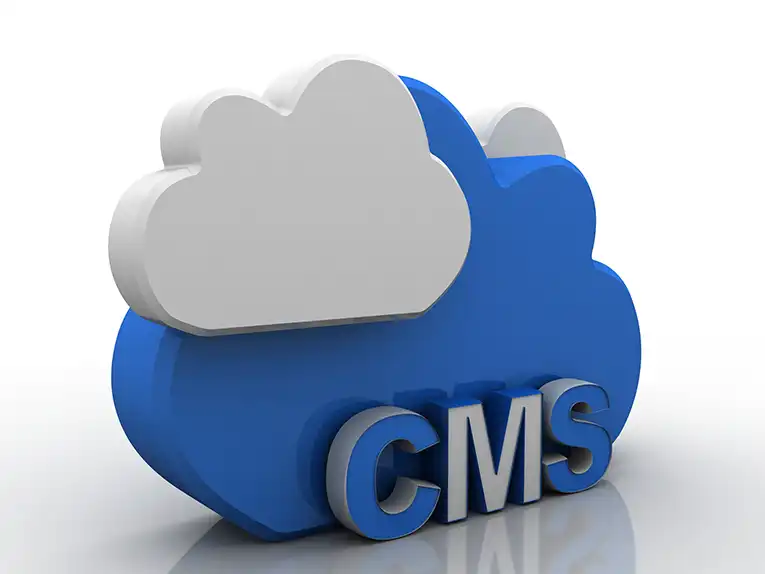Composable CMS: The Key to Increased Agility and Flexibility

Amanda Lee

Composable architectures have become increasingly popular among leading enterprises. In a world of swiftly changing customer expectations, the emergence of new channels, and the need to move away from complex monolithic approaches, composability provides increased agility, flexibility, and performance.
According to the Netlify State of Web Development 2023 survey, 75% of developers have built solutions with composable architecture in the past year. To maximize the benefits of this architectural approach and deliver the types of experiences customers demand, a composable CMS offers exactly what enterprises need.
What Is a Composable CMS?
A composable CMS is a modular content management system made up of different individual components. It is the opposite of a traditional or monolithic CMS, built using a tightly coupled frontend and backend.
Whereas that singular architecture lacks modularity and doesn’t align with the composable approach many modern enterprises favor today, a composable CMS offers increased flexibility and adaptability. It follows the principles of composability, which focuses on letting businesses select the tools they want to use for their unique requirements, leading to increased flexibility and business agility.
The simplest form of a composable CMS is akin to a headless CMS, which separates the frontend and backend components. A true composable CMS can be made up of different packaged business capabilities, including content modules, microservices, APIs, widgets, and other elements.
For example, a backend content repository can be connected to various frontends via APIs. This enables content to be delivered to various interfaces, from websites and mobile apps to digital signs and more. Additionally, a composable can be connected to different backend microservices such as search, language translation tools, personalization, and more.
Key Characteristics of a Composable CMS
Although a headless CMS offers some composability aspects, that doesn’t mean that every headless CMS can be categorized as a composable CMS. The characteristics of a true composable CMS include:
- Modularity: A composable CMS should offer a modular architecture. This means that each component can be developed, deployed, and operated independently of the others, as organizations have granular control over each.
- Flexibility: A composable CMS should offer the flexibility to enable organizations to create unique content experiences without being confined to rigid templates. Instead, businesses should be able to arrange and combine modular components to best suit their specific requirements and design preferences.
- Customizable: Being purpose-built means that a composable CMS isn’t a one-size-fits-all solution. Instead, it should be customizable so that companies can select and integrate components that align with their specific goals and requirements in order to serve different use cases, industries, or projects.
- Efficiency: Efficiency is another characteristic of a composable CMS, as it should allow businesses to easily reuse components and leverage existing modules without additional development work.
Why Composability Matters
Several enterprises have shifted away from monolithic CMSs towards composable architecture because of the benefits it provides:
- Adaptability: A composable CMS is built on headless architecture. As such, changes in the frontend of the CMS-driven app don’t mean that there must be changes in the backend of the CMS. This provides increased flexibility, meaning developers and content creators can operate independently, don’t need to wait on each other, and can adapt to changes in customer channels and technologies as necessary.
- Reduced Vendor Lock-In: With a composable CMS, users can select the best components and services for their needs, even from different vendors. This removes the restrictions that force companies to stick with a particular vendor when the CMS no longer performs as it once did. Instead, the modularity of a composable CMS enables businesses to swap components as they see fit.
- Cost Efficiency: With a composable CMS, choosing only the components you require is possible. For example, whereas some CMSs may come with built-in commerce and personalization features, a composable CMS allows you to choose the components you want. Additionally, organizations can reuse components on multiple projects, allowing teams to optimize resources and organizations to achieve a faster return on investment. Moreover, the ability to choose and pay only for the necessary components contributes to overall cost-effectiveness and leads to a better return on investment.
- Scalability: A composable CMS can grow to meet increasing demands and content requirements over time. A composable CMS can scale horizontally by adding new components or vertically by enhancing or replacing existing ones, ensuring the system remains responsive and efficient as the organization grows.
- Innovation: A composable CMS encourages innovation as businesses can adopt new technologies, publish content to new channels, and stay at the forefront of technology by integrating new tools or features without overhauling the entire system.
How CrafterCMS Unlocks Composability
Composability provides numerous benefits to help modern enterprises today. To maximize those benefits, it is essential to leverage the full capabilities of a composable CMS. CrafterCMS is a modern headless CMS and composable content platform that offers significant advantages over most other composable CMSs.
Decoupled, Microservices Architecture
CrafterCMS offers a truly decoupled, microservices architecture that completely separates the content authoring system (Crafter Studio) from the headless content delivery engine (Crafter Engine), each of which are composed of multiple independent services. This decoupled approach offers increased reliability, security, and scalability compared to most other headless CMS solutions. And from a composability point of view, this means that CrafterCMS supports both composable content authoring experiences, as well as composable end user experiences.
Composable Content Authoring Experiences
Content authoring in CrafterCMS is handled by Crafter Studio, the authoring user interface that sits on top of the API-first headless content authoring platform. Crafter Studio is an extensible React application that can be used to create different content experiences on its own or be integrated with solutions such as various frontend-as-a-service (FEaaS) and digital experience composition (DXC) tools.
Crafter Studio is also extensible and allows teams to integrate additional services, including analytics, workflow engines, generative AI tools, publishing destinations, language translation tools, and more. Content authors can use the specific tools they need to create/edit/manage content while publishing to completely decoupled digital sites, apps and channels. They can also create different roles, authors, and workflows to facilitate different use cases.
Composable End User Experiences
CrafterCMS also supports composable end user experiences by providing developers and content creators with a flexible, modular platform that allows for the integration of various digital components and services. This modern approach enables organizations to tailor and assemble digital experiences piece by piece, like building blocks, to meet specific user needs and preferences. With CrafterCMS, developers can leverage APIs, plugins, and microservices architectures to create and manage dynamic, personalized content across multiple channels. This composability ensures that end users receive a seamless, engaging experience that is both consistent and customized, whether they are interacting with web applications, mobile apps, or other digital touchpoints.
Extensibility
CrafterCMS offers an embedded Groovy scripting engine that enables enterprises to extend its native REST and GraphQL APIs, build custom APIs, and shape API responses to match your app needs. For Javascript developers, native support for Node.js (and Next.js, Nuxt.js, etc.) server-side development is supported as well.
Built-in Services
Personalization, search, and server-side scripting are some of the prepackaged business capabilities built into CrafterCMS that accelerates time-to-value for both content authors and software developers. With other headless and composable CMSs, these services require the additional cost and integration time of a third-party vendor. With CrafterCMS, you can compose your authoring experience and end user experiences with other services, but you are not required to. CrafterCMS bundles in the most important tools out-of-the-box.
Plugin Framework and Marketplace
CrafterCMS offers a robust plugin framework and marketplace. Plugins enable developers to easily add functionality and features to a web experience (site, mobile app), the content authoring experience (authoring tools), or both. For example, if a developer wants to add a contact form, chatbot, or analytics to an existing web app.
Also, unlike other systems (particularly like traditional WordPress or Drupal) that end up with complexity and version incompatibilities, the CrafterCMS plugin framework supports composable APIs, strong version compatibility enforcement, and multi-tenancy. Plugins can be adapted for use across multiple projects and sites, providing for a composable authoring experience for each one.
For example, a company may have one team managing the employee intranet while another manages another external website or customer portal. The employee intranet may require the addition of HR plugins such as document management, SSO, and different benefits systems integrations. At the same time, the external portal leverages an entirely different set of plugins and widgets. Each group can operate independently without getting in the other’s way.
Multi-tenant CMS
CrafterCMS’s multi-tenancy offers the functionality to compose a unique CMS experience. Multiple teams within the same organization can essentially leverage “different CMSs” for different use cases, without actually requiring another CMS. Each department can customize CrafterCMS to fit their unique needs, all on the same platform.
Git-Based CMS
CrafterCMS utilizes the open source Git version control system as its content repository, which eliminates the bottlenecks of database-centric CMSs, streamlines collaboration between content teams and developer teams, and enhances developer productivity that is critical for composable applications.
Building Composable Experiences With CrafterCMS
Multi-Site Flexibility
An education services company has a variety of websites that serves their customers including many leading universities and colleges. Before adopting CrafterCMS, their previous CMS lacked user-friendly features and was difficult for content authors to use appropriately.
Now, using CrafterCMS, content teams have full flexibility and tailored, composable experiences for each digital experience that they manage. They log in to Crafter Studio and manage individual website experiences using a purpose-built solution tailored for that use case and employee experience, gaining tremendous productivity advantages.
Integrating Multiple Content Repositories
An e-commerce retailer creates a custom content authoring experience using Crafter Studio connected to another content repository. Files are edited and managed in Git, and API calls are made from the Crafter Studio cockpit, allowing marketers to manage, preview and publish content experiences for a wide variety of audiences and delivery channels. This composable CMS capability has reduced development time and increased productivity.
Unique Content Experiences
While a composable CMS like CrafterCMS is ideal for building websites, e-commerce sites, mobile apps, intranets and other typical content experiences, it can also be used to compose quite unique experiences, such as 2D browser-based games and AR/VR experiences.
To learn more about the composable CrafterCMS platform, check out our YouTube video: Building Composable Digital Experiences.p
Related Posts

Navigating the Future of Digital Experiences: A Deep Dive into Emerging Trends

Amanda Jones

Building Personalized Digital Experiences for a Cruise Liner

Sara Williams

CrafterCMS Wins More G2 Awards Spring 2024

Amanda Lee

What Is a Cloud CMS? (Unlocking the Benefits of a CMS in the Cloud)

Sara Williams
Related Resources
-

Personalized Digital Experiences for a Cruise Liner
Webcast
-

Introducing CrafterCMS v4.0
Webcast
-

Modernizing Video Delivery and Content Management at CPAC, A Canadian Nationwide Broadcaster
Webcast
-

Building React Apps on a Headless CMS
White Paper
-

Building OTT Video Experiences with Headless CMS on AWS
White Paper





